Melbourne residents living above a former toxic waste site were exposed to an "unacceptable" cancer risk and a "high risk" of explosions, according to documents handed in the past week to people living near the old tip.
Neither the Brimbank City Council nor the Environment Protection Authority could explain on Friday why residents were not warned of the risks for seven years after a damning 2013 report about the contamination.
Dozens of people in St Albans are living on land potentially contaminated by radioactive materials, solvents, paints, oil, acids, poisons, manure and other household and industrial waste from the former Sunshine Landfills site.
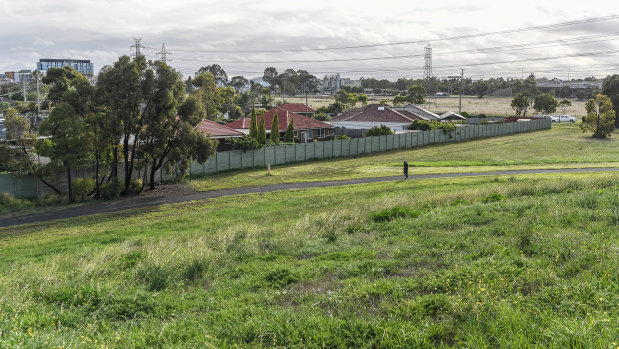
View from the old Sunshine Landfills site onto houses on Denton Avenue in St Albans.Credit: Justin McManus
Documents obtained by The Age on Friday reveal that testing near some properties conducted in 2018 showed an elevated exposure to benzene that posed a lifetime cancer risk above the acceptable level.
The documents also reveal residents may have been exposed to a "high risk of explosion" due to elevated levels of methane and carbon dioxide recorded on the perimeter of some properties.
Michelle Hodgers, who has lived alongside the old dump for 35 years, said she feared for the health of her three young children. She said an unusually high number of people in the surrounding streets had experienced health issues, including cancer and miscarriages, with some even complaining of deformed litters of puppies.
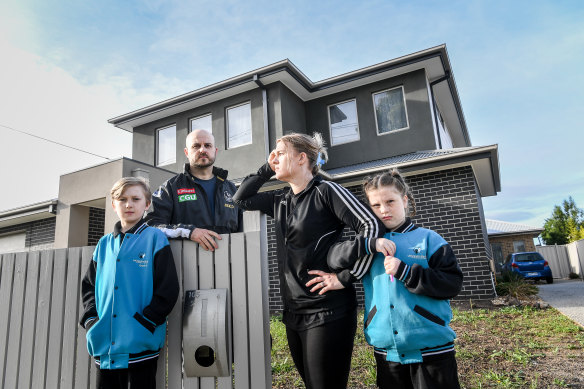
Arron Reid with wife Michelle Hodgers and two of their three children Kai and Payton. The young family live on Denton Avenue in St Albans.Credit: Justin McManus
A risk assessment document handed to residents by the council states that the elevated 2018 benzene reading might have been "artificially elevated" and might not be a reflection of the level of exposure on a "continual basis".
"Continued monitoring at the location is recommended to confirm that risk remains low and acceptable to residents over time," the document reads.
Irate western suburbs homeowners are contemplating suing Brimbank Council, which, along with the Environment Protection Authority, failed to tell about 70 households that there was a "high risk" of exposure to gasses emitted from land beneath their homes until last week. The "high risk" finding was made in 2013, but the local council and the environmental watchdog did not warn residents of the risks until last week. Further testing last year downgraded the risk to "low".
A large section of St Albans land adjacent to the Western Ring Road was used as a tip between 1967 and 1978.
Ms Hodgers recently subdivided the land of her parents' Denton Avenue family home and built two townhouses, taking on a 30-year mortgage with her husband Arron Reid.
The couple, who have three young children, said there had been a high number of serious and unusual health issues among residents in the street.
Both of Ms Hodgers' parents died of cancer while living in the street.
According to Ms Hodgers and her husband, a neighbour experienced breathing problems once they moved to the area, while a dog breeder produced a litter of deformed puppies. The couple's 11-year-old son, Kai, had a cancer scare when a large lump appeared near his lymph node, requiring months of testing, while Kai's brother Kobe had an unexplained seizure.
"They're all weird things and you can't help but question it all," said Ms Hodgers.
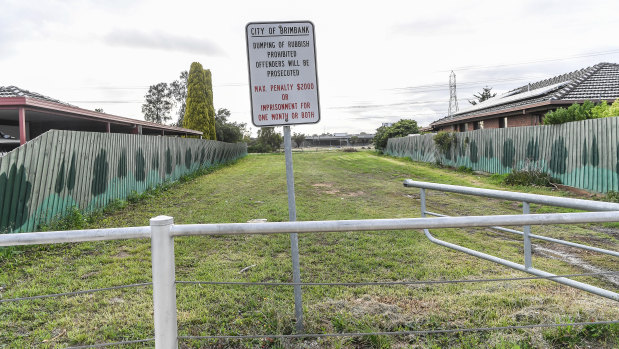
A block on Denton Ave where a house was demolished and never rebuilt.Credit: Justin McManus
The couple – who fear for their financial security given the likely hit to property prices following council's disclosure – said council officials told them the risk of exposure decreased over time.
"But Michelle has been here for 35 years," Mr Reid said. "How bad was it then?"
In interviews on ABC radio on Friday, council and EPA officials could not explain their failure to immediately disclose the 2013 "high risk" result to all residents. Some residents had been informed of the test results when officials entered homes after 2013 to monitor gas levels, they said.
But residents who spoke to The Age said they had not been warned of the risks until last week.
Kelvin Walsh, director of city development at Brimbank Council, admitted the system of disclosure to prospective property buyers was "not ideal".
"Everyone is responsible in this case," he said. "So the Department of Planning, the Environment Protection Authority and us as council need to take action to ensure that everyone is fully informed going forward."
Mr Walsh and Stephen Lansdell, EPA's western region manager, said the matter had been discussed with residents in the two years before the 2013 test result.
Council officials visited residents late last week, providing families with information packs detailing the chemicals on their property.
However, homeowners said they could not understand the language and scientific details in the documents, and remain confused about their options. Some have not read their information packs and the council has not responded to a community request for a town hall meeting.
Groups of neighbours have been meeting to discuss their legal options.
Over the past decade, officials have entered homes and used needle-like gas testing devices to test toilets, cupboards and soil for toxicity and methane levels.
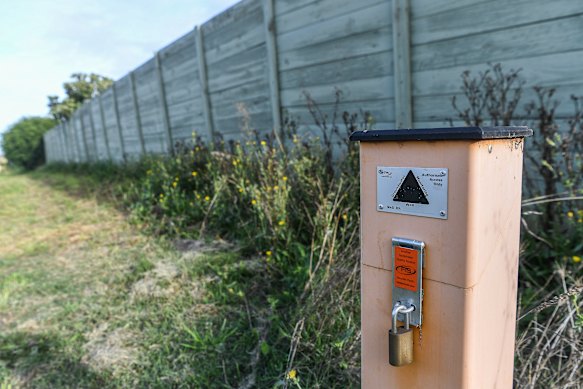
A groundwater monitoring well behind properties in St Albans.Credit: Justin McManus
And in 2016 and 2017, metal "bore" poles to test the soil were inserted at the former tip site, just behind the back fences of properties.
A large hill was built to cover the main section of the former tip between properties and the Western Ring Road. Some residents thought the hill was to reduce noise pollution, but William Cartledge, 77, said council told him it was for kids to use as a play area.
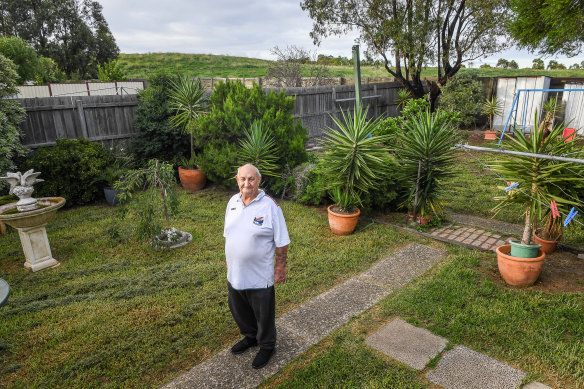
William Cartledge in his backyard, with the hill which was built on top of the Sunshine Landfills tip behind him.Credit: Justin McManus
"Everything council tells you is bullshit," said Mr Cartledge, who has lived on Denton Avenue for 35 years and previously used the tip when he ran a logistics company.
"Why should we be lied to? We should have been told this when we bought the land."